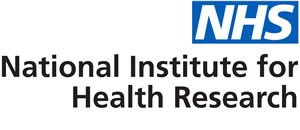TRANSFORMING TREATMENT OF FISTULA-IN-ANO: A NOVEL BIORESORBABLE SETON-SCAFFOLD DEVICE
PROJECT SUMMARY
The NIHR Trauma Management MedTech Co-operative (NIHR Trauma MIC) assisted a collaboration between Neotherix Ltd., Keighleycolo Ltd., the Academic Department Surgery at University Hospitals Birmingham, and the University of Birmingham, on the development of a new device for treating fistula-in-ano.
CLINICAL NEED
Fistula-in-ano (FIA) is an intrusive and potentially embarrassing condition that affects around 12,000 new patients every year in the UK. Sufferers experience daily discomfort and unpleasant discharge from a tunnel connecting their back passage to their skin. The condition is notoriously difficult to treat and typically requires multiple operations under general anaesthetic, over several months or even years. These operations carry a risk of permanent anal incontinence, allowing uncontrolled emissions of gas and faecal soiling due to sphincter muscle damage. Despite this, failure rates are high, and some patients must live with FIA symptoms for the rest of their lives.
THE SOLUTION
The project was developed to use the latest materials technology to design a novel therapeutic device for the treatment of FIA that would allow the fistula tract to drain and heal at the same time. The new device had the potential to provide a simple, cheap and safe alternative treatment that could avoid the multiple surgical treatments that patients often require currently. The work programme was designed to collect all of the information required to gain the regulator’s approval for a first-in-human (safety) clinical trial and report this data by the end of the project.
HOW WE SUPPORTED
The NIHR Trauma MIC provided regulatory and commercialisation advice, assisted in supporting a funding application for product development, undertook human factors validation (formative and summative usability) studies, and facilitated a first-in-human clinical evaluation to obtain evidence to support regulatory approval.
NIHR Trauma MIC supported by:
Identifying and partnering on grant funding applications to secure a 36 month NIHR grant.
- Attending steering committee meetings and advising on regulatory and commercialisation requirements.
- Helping to establish a PPIE focus group at UHB and recruiting a PPIE representative to the steering committee to maintain a patient perspective of the work.
- Helping to conduct an education session with FIA patients using a 3D fistula model to gather feedback on the training and education requirements for patients.
- Assisting with laboratory testing of different material formulations.
- Planning, setting up and moderating a formative usability study using a 3D fistula model to assess the ease of use, training requirements and instructions for use of prototype versions of the device in a realistic, simulated environment.
- Recruiting 6 clinical staff (2 nurses, 2 surgical trainees, 2 consultant surgeons) to the usability study, filming the testing sessions using a static, high-definition camera and conducting post-study questionnaires and interviews.
- Compiling comprehensive reports and edited video for both usability studies to summarise the outcomes and participants feedback.
- Helping to obtain the required approvals from REC, HRA, MHRA and UHB Research Governance to open a first-in-human clinical investigation.
- Project managing the first-in-human clinical investigation and close down of the project.
- Working with the project team and NIHR to reschedule the project during the disruption caused by the COVID-19 pandemic, including successful application for a funding extension.
- Supporting initial contact meetings with potential industry partners for future commercialisation.
- Completing the final financial report and managing the submission of all NIHR reports on schedule.
OUTCOMES
Initial laboratory testing established appropriate design characteristics for the first prototype. This included suitable thickness, shape and suturing requirements, and information on the degradation and mechanical strength of the device.
The education, training and usability sessions provided valuable feedback from both patients and clinicians on the concept of the device and practicalities of using it. Modifications to the device design, training and education materials were identified in preparation for the first-in-human clinical investigation.
The clinical investigation was ready to open as soon as non-COVID19 related studies were allowed at UHB and successfully recruited 20 patients. The study showed that the device was safe to use, had very good patient and clinician acceptance. Data return rates were excellent which allowed a detailed report to be prepared for the MHRA. However changes in regulatory requirements indicate that further testing on patients is now required. The collaboration is applying for funding to support a larger follow on study to address these areas.
TESTIMONIAL
“The Seton Scaffold Device (SSD) consortium: University Hospitals Birmingham NHS Trust, University of Birmingham, Neotherix and Keighleycolo have been delighted to work with and to be supported by NIHR Trauma MIC who provided important in vitro and clinical expertise to enable us to take the SSD concept into man for the first time. Professor Clutton-Brock and his team brought great expertise and professionalism that enabled our device to enter the clinical arena to the benefit of patients in the future.” Dr Mike Raxworthy, CEO, Neotherix Ltd and Professor Michael Keighley, Managing Director, KeighleyColo Ltd

